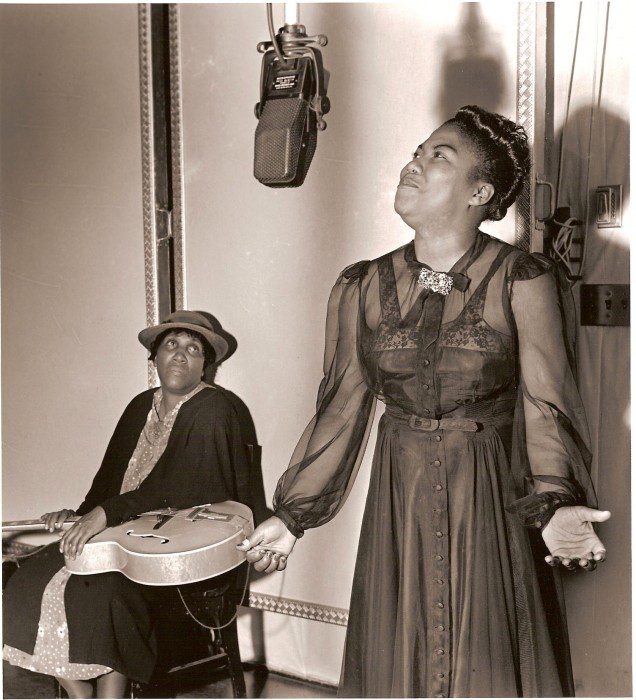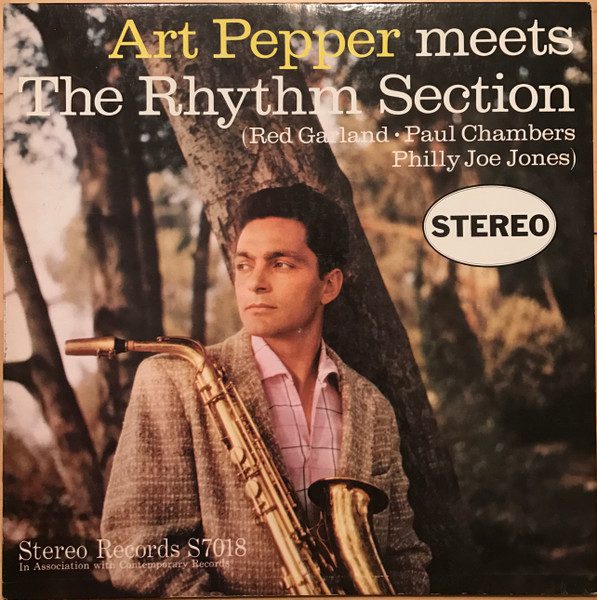
Beginnings in the Delta
Cotton Plant, Arkansas, 1915: Nestled amidst a sea of cotton fields, this town, where the Mississippi Delta begins its stretch, bore witness to the birth of Rosetta Nubin. It wasn’t just any place; the Delta was the cradle of American music, a melting pot of African rhythms, field hollers, and church hymns. And it was here, under its vast sky, that young Rosetta’s journey began.
Her home was filled with music. Her mother, Katie Bell Nubin, wasn’t just a preacher but a beacon of song and spirit, wielding her mandolin with finesse, ensuring the gospel’s powerful message resonated in every corner of their modest wooden church. It was evident early on that Rosetta had inherited her mother’s gift. By the age of six, with her small hands clutching her first guitar, she was already a marvel, delivering soul-stirring performances that often overshadowed the seasoned voices of adult choir members.
Life in the Delta wasn’t just about music; it was a tapestry of experiences. Rosetta grew up in the shadow of Jim Crow, in a world of segregation and profound racial disparities. But within the Black community, there was resilience, a sense of unity, and an unbreakable spirit that manifested in the soulful tunes sung during Sunday services, community gatherings, or even while working in the fields. These experiences, this landscape of sorrow and joy, of oppression and hope, deeply influenced Rosetta’s musical narrative.
She didn’t just play; she communicated. The sounds of the Delta, the cries of the Mississippi, the stories of her people — all found their way into her fingers, her voice, her soul. And as she strummed her guitar, her listeners could hear the Delta blues’ haunting melodies seamlessly weave into jubilant gospel refrains, a testament to her unique ability to fuse genres, to tell stories, to evoke emotion.
This early immersion in the rich, multifaceted culture of the South provided Rosetta with more than just musical skills. It gave her a foundation, a strong sense of identity, and a mission — to elevate the voices of her community, to challenge norms, and to pioneer a new sonic landscape that the world had never heard before. And as the years rolled on, Rosetta was poised to do just that, taking her Delta roots and introducing them to a broader world, hungry for a new kind of sound.


A Northern Migration
The dawn of the 20th century heralded a transformative era in American history: The Great Migration. Millions of Black families, in search of better opportunities and an escape from the suffocating grip of Jim Crow, began a mass exodus from the rural South to the urban North. The North wasn’t just a promise of jobs and freedoms; it was a canvas of cultural renaissance, and for young artists like Rosetta, it was the stage they had been waiting for.
Rosetta’s first tryst with the North was Chicago. The Windy City, with its sprawling boulevards and burgeoning neighborhoods, was undergoing a cultural metamorphosis. Gospel, a genre Rosetta held close to her heart, was flourishing in Chicago. The city’s churches became epicenters of this musical revolution, and its gospel scene was a powerful magnet for talent from across the South. It was in this dynamic environment that Rosetta found her voice, blending her Delta roots with the electrifying energy of urban gospel.
But the call of the East Coast was irresistible. New York City, in the throes of the Harlem Renaissance, was a siren song for Black artists. Harlem, with its vibrant tapestry of poets, musicians, and intellectuals, was redefining Black identity. Jazz was the anthem of this movement, and its clubs, teeming with innovation and experimentation, were fertile ground for a musician of Rosetta’s caliber.
Upon her arrival, she quickly became a sensation. The city’s jazz clubs, from the iconic Cotton Club to the smoky underground speakeasies, resonated with her powerful chords and impassioned vocals. But it wasn’t just jazz enthusiasts who were captivated. The burgeoning record industry, always on the hunt for the next big thing, recognized in Rosetta a unique blend of gospel’s sanctity and rock’s rebellious spirit. Record deals followed, and Sister Rosetta, the girl from Cotton Plant, found herself on a trajectory that few could have imagined.
Yet, even as her star soared in the city that never sleeps, Rosetta remained grounded in her mission. Her music, while evolving, never lost its essence. The struggles of the South, the resilience of her community, and the lessons from her mother remained at the heart of her artistry. New York offered her a platform, but it was her authentic voice, deeply rooted in her origins, that made her an unforgettable icon in the annals of music history.


Gospel, With a Twist
In a world rigid with musical classifications, Sister Rosetta Tharpe danced on the blurred lines between the sacred and the profane. Gospel, with its heavenly focus and divine messages, had historically been kept pure, untouched by the earthlier beats and rhythms of secular music. But for Rosetta, there were no such boundaries. Music was an expression of the soul, a language that transcended tags, and she was fluent in its many dialects.
Rosetta’s contemporaries adhered to the orthodox sounds of gospel. Their music echoed the sanctified churches, sermons, and Sunday choirs, reverberating with piety and traditionalism. But Rosetta, ever the maverick, heard a different beat. She recognized that the human experience wasn’t merely spiritual; it was filled with love, longing, joy, and sorrow. Why shouldn’t gospel music reflect that entire spectrum?
In tracks like “Rock Me” and “That’s All,” Rosetta daringly merged the passion of gospel with the worldly allure of secular melodies. Her voice, laden with religious fervor, also echoed with the tantalizing notes of sensuality. This juxtaposition, while magnetic to many, was deemed blasphemous by traditionalists. Rosetta was challenging norms, treading on sacred ground, and reshaping gospel’s very essence. To some, she was a rebel; to others, a visionary.
But it was with “Strange Things Happening Every Day” that Rosetta truly left an indelible mark on the music landscape. The track wasn’t just another gospel song. Its rollicking tempo, the electrifying energy of her guitar solos, and the raw vigor in her voice gave the world a sound it hadn’t quite heard before. It was gospel, yes, but with the spirit and energy of what would soon become known as rock ‘n’ roll. Many music historians hail this track as the first rock ‘n’ roll record, a testament to Rosetta’s avant-garde approach.
Rosetta’s bold fusion of genres wasn’t merely an experimental whim. It was a reflection of her belief in music’s universality. By blending gospel with secular sounds, she was creating a bridge, inviting listeners from all walks of life to find common ground in melody. Her audacity to challenge conventions and redefine genres laid the foundation for future generations, proving that in music, as in life, evolution is not just inevitable, but essential.
A Woman in a Man’s World
The mid-20th century music scene, especially in genres like jazz, blues, and the budding rock ‘n’ roll, was a domain largely governed by men. The spotlight often favored the male virtuosos, casting a shadow on the equally talented, if not more, women who dared to step into this realm. But for Sister Rosetta Tharpe, shadows were merely spaces awaiting illumination.
While her male counterparts enjoyed the lion’s share of recognition, Rosetta didn’t merely aspire to be “as good as” the men; she aimed to surpass, to carve a niche so distinct that gender became an afterthought. And she did. Grasping her beloved Gibson SG, she matched and often outshone luminaries like Cab Calloway and Benny Goodman. Her collaborations further cemented her legacy. Joining forces with the soul-stirring Marie Knight, the duo didn’t just harmonize; they revolutionized, pushing boundaries and crafting a sound that was uniquely theirs.
But what truly set Rosetta apart wasn’t just her unparalleled skill; it was her charisma. In an era where stage presence was almost as vital as musical talent, Rosetta was a force of nature. Audiences didn’t just come to hear her; they came to experience her. Her concerts were less performances and more electrically-charged events. With every strum, she communicated a story. Her guitar wasn’t just an instrument; it was an extension of her very soul. She could make it croon softly like a lullaby or roar with a fervor that shook concert halls. And just when you thought you had seen it all, she’d surprise by drawing her guitar close, dancing with it, or effortlessly playing it behind her back, showcasing a showmanship rarely witnessed during her time.
Her aura was magnetic. Whether it was the passionate believer, the curious skeptic, the jazz aficionado, or the rock ‘n’ roll rebel, audiences from varied backgrounds were drawn to her. In her concerts, differences melted away, leaving only the shared euphoria of music.
Yet, being a woman, especially a Black woman in that era, came with its own set of challenges. There were doubters and detractors, those who tried to belittle or sideline her. But for Rosetta, every challenge was an opportunity. With grit and grace, she navigated the labyrinth of prejudices, emerging not just as a successful female musician but as a trailblazing icon whose legacy would inspire countless others. In the annals of music history, Rosetta’s tale isn’t just about breaking glass ceilings; it’s about transcending limitations and redefining what’s possible.


Legacy Overlooked
In the rich tapestry of rock’s evolution, where larger-than-life figures stand tall, Sister Rosetta Tharpe’s presence is curiously understated. This is a paradox, especially considering her monumental contributions to the genre. While luminaries like Elvis Presley, Johnny Cash, and Chuck Berry are revered for their inimitable styles, all of them, at various points, tipped their hats to Rosetta, acknowledging the musical foundation she provided for them. However, mainstream rock narratives, whether inadvertently or intentionally, often cast her in a supporting role, rather than the pioneering lead she rightfully was.
It’s a poignant reminder of how history, at times, can be selective, favoring some narratives over others. But while commercial fame might have eluded her in the magnitude it reached her successors, Rosetta’s influence on music is both undeniable and pervasive. From the raucous energy of guitar solos to the soulful depth of vocals that blend worldly experience with spiritual fervor, echoes of Rosetta’s style can be discerned. The belated nod from the Rock and Roll Hall of Fame in 2018, though a significant acknowledgment, barely scratches the surface of the homage she warrants.


A Timeless Anthem
Her life story is a masterclass in tenacity, passion, and innovation. Beyond her undeniable talent, it was Rosetta’s fearless determination to push boundaries and challenge conventions that set her apart. In a world that often tried to confine her within established norms, she consistently broke free, crafting a sound that was as rebellious as it was reverent.
Today, as we stand at the crossroads of numerous musical influences and look towards a future rich with potential, pausing to acknowledge the past becomes crucial. Every artist, knowingly or unknowingly, stands on the shoulders of giants. And in the realm of rock ‘n’ roll, Sister Rosetta Tharpe stands as one of the mightiest.
As we celebrate and embrace the musical maestros of our generation, let’s ensure that the luminaries of yesteryears, like Rosetta, aren’t overshadowed. For in understanding and honoring their contributions, we truly appreciate the depth and breadth of the music that enriches our lives today. In the grand narrative of rock ‘n’ roll, Sister Rosetta Tharpe’s contributions serve not merely as footnotes but as foundational pillars that will continue to inspire, influence, and ignite passions for generations to come.



















Leave a Reply